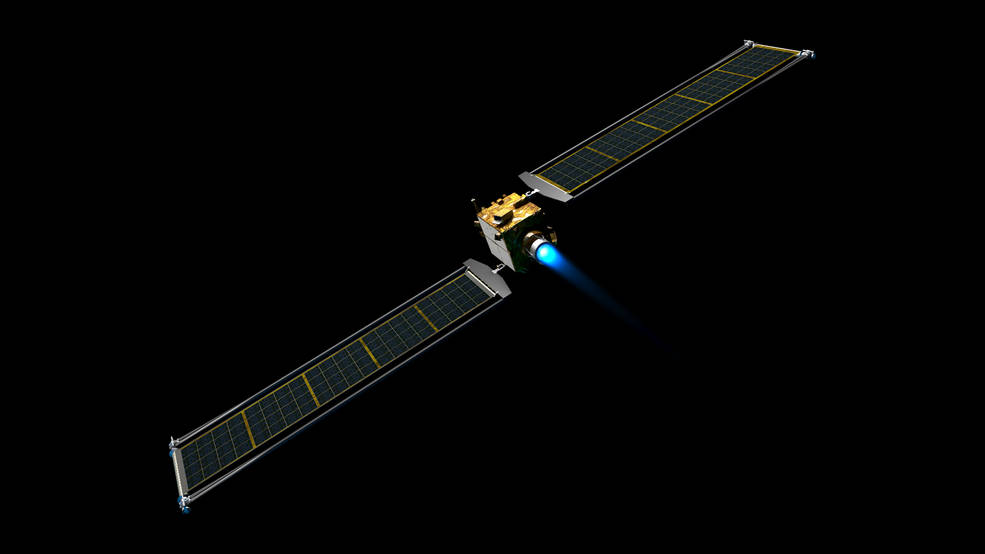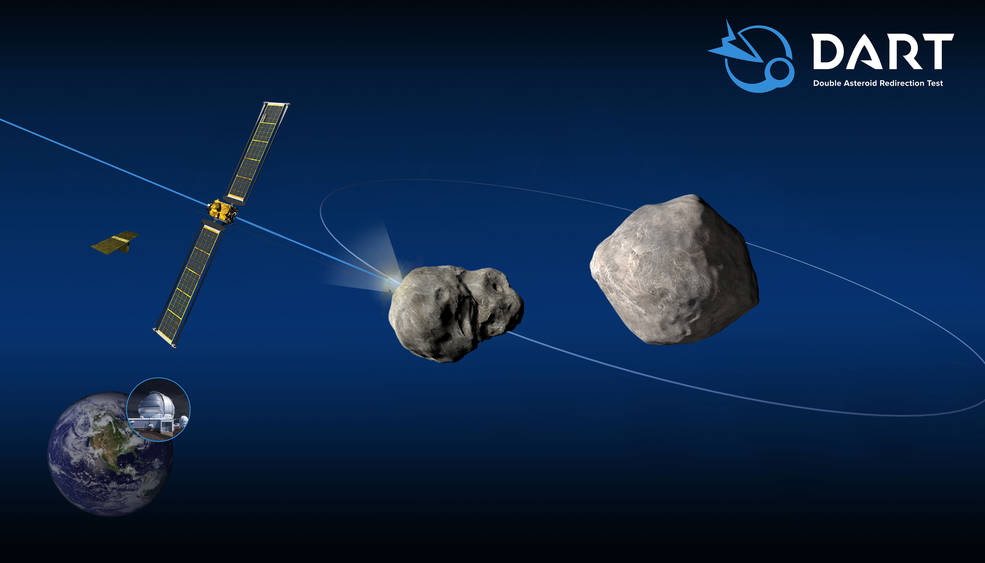NASA’s asteroid deflection “Armageddon” style mission (DART) will launch in November. The Double Asteroid Redirection Test, which is essentially a test run of the movie “Armageddon,” has a launch date announced by NASA. Unlike the movie, this will not entail nukes, oil rigs, or Aerosmith; instead, it will be a practical test of our ability to significantly and predictably alter the track of an asteroid.
DART is scheduled to launch from Vandenberg Space Force Base in California at 10:20 p.m. PST (1:20 a.m. EST) on Nov. 23, 2021 (1:20 a.m. EST on Nov. 24). The launch will be broadcast live on NASA TV, the NASA app, and the agency’s website.
The kinetic impactor technique, which involves delivering one or more big, high-speed spacecraft into the path of an asteroid in space to change its trajectory, will be demonstrated for the first time with DART. The binary near-Earth asteroid Didymos and its moonlet are its target.

NASA’s asteroid deflection “Armageddon” style mission (DART) Double Asteroid Redirection Test (DART):
NASA has entrusted the Double Asteroid Redirection Test (DART) mission to the Johns Hopkins Applied Physics Laboratory (APL), with assistance from several NASA centres including the Jet Propulsion Laboratory (JPL), Goddard Space Flight Center (GSFC), Johnson Space Center (JSC), Glenn Research Center (GRC), and Langley Research Center (LaRC).
DART is a planetary defense-driven test of technologies aimed at preventing an asteroid from colliding with Earth. DART will be the first time a kinetic impactor will be used to alter an asteroid’s motion in space. The DART project is currently in Phase C, directed by APL and administered by Marshall Space Flight Center for NASA’s Planetary Defense Coordination Office and the Science Mission Directorate’s Planetary Science Division at NASA Headquarters in Washington, DC, under NASA’s Solar System Exploration Program.
Also Read:
NASA Artemis program selected five US companies for crewed trips to the moon.
[email-subscribers-form id=”1″]
The DART demonstration will focus on the binary near-Earth asteroid (65803) Didymos. While the core body of Didymos is around 780 metres in diameter, its secondary body (or “moonlet”) is roughly 160 metres in diameter, which is more typical of asteroids that potentially pose the greatest threat to Earth. Before DART arrives, the Didymos binary is being closely monitored using Earth-based telescopes in order to precisely measure its features.

With the use of an onboard camera (called DRACO) and advanced autonomous navigation algorithms, the DART spacecraft will achieve the kinetic impact deflection by purposefully smashing into the moonlet at a speed of roughly 6.6 km/s. The collision will modify the speed of the moonlet in its orbit around the parent body by a fraction of a percent, but the orbital period of the moonlet will change by several minutes, which may be detected and recorded using telescopes on Earth.
DART will use Roll Out Solar Arrays (ROSA) to supply solar power for its electric propulsion system once it is launched. As part of its in-space propulsion, the DART spacecraft will test NASA’s Evolutionary Xenon Thruster – Commercial (NEXT-C) solar electric propulsion system. The NEXT-C system was developed at NASA’s Glenn Research Center in Cleveland, Ohio, and is based on the Dawn spacecraft propulsion system. DART might benefit from tremendous mission timeline flexibility by using electric propulsion while proving the next generation of ion engine technology, which could be applied to future NASA missions.
The launch window for the DART spacecraft opens on November 24, 2021. DART will take off from Vandenberg Air Force Base in California on a SpaceX Falcon 9 rocket. It will intercept Didymos’ moonlet in late September 2022, after separation from the launch vehicle and a year of cruise, when the Didymos system is within 11 million kilometres of Earth, allowing observations by ground-based telescopes and planetary radar to measure the change in momentum imparted to the moonlet.


